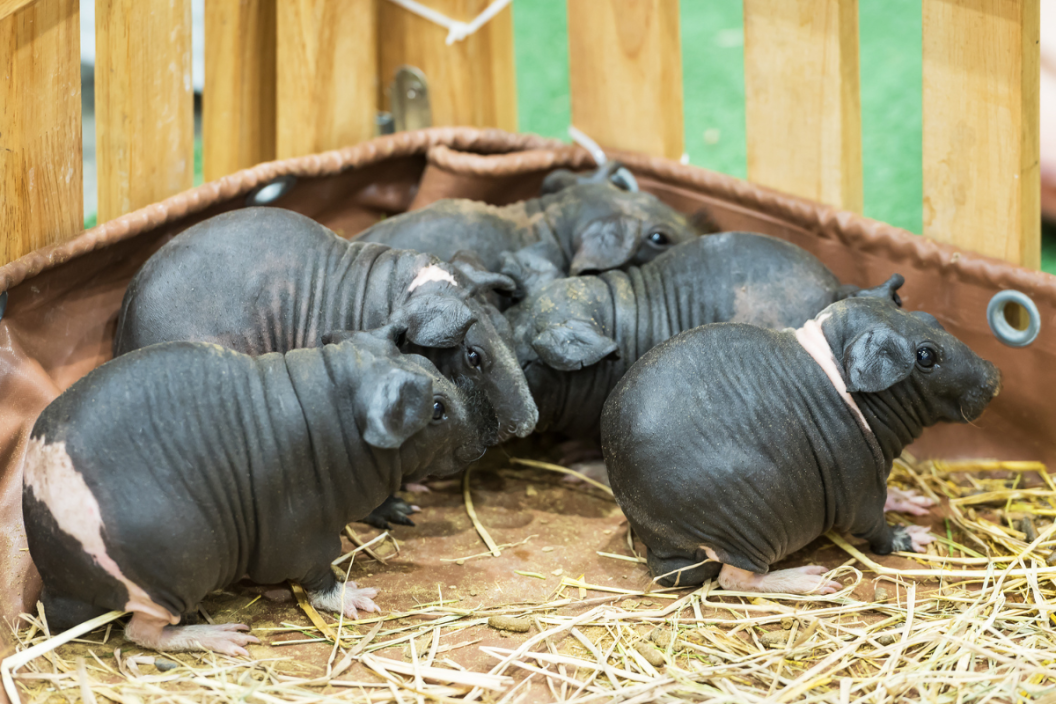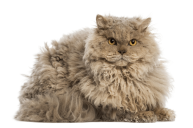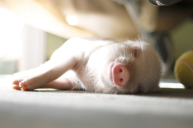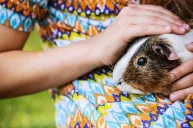No, it's not a skinny pig; it's a skinny guinea pig. This unique breed is a hairless version of regular guinea pigs. Much like their hairless cat counterparts, these creatures look a little bit weird, but their lack of hair doesn't mean they're any less snuggly or adorable.
Skinny pigs might look weird, but allergy-sufferers can rejoice: less hair means fewer allergies and fewer vacuuming sessions! Fluffy doesn't have to be synonymous with adorable, and this breed is just as cute as its furry counterpart. Like most guinea pigs, they require minimal amounts of space, and are easy to care for. Guinea pigs make for a great first time pet for kids or even kids at heart. Here's everything you need to know about these little guys.
History of the Skinny Pig

These nearly hairless little creatures may look prehistoric, but, in fact, are the newest breed of guinea pig. This breed was developed in 1978 by scientists who were conducting dermatology studies. They crossbred a haired guinea pig with one of their hairless lab strains due to a spontaneous genetic mutation, to create a brand-new breed perfect for their studies. After all, it's much easier to study skin conditions when you can actually see the skin.
Pet owners found it hard to resist the breed. After all, pets without the extra cleanup are always in demand. Since then, the skinny pig has moved beyond the lab and is gaining popularity in Europe and North America as a family pet.
The term "skinny pig" is often used to describe any hairless guinea pig, but it is, in fact, a distinct breed. Unlike the other type of hairless guinea pig, the Baldwin guinea pig, skinny pigs actually do have some hair.
Despite being nearly hairless, they come in a variety of colors and patterns such as Dutch, tortoiseshell, Himalayan, and many others. This hairlessness also makes them a great pet for people who have allergies to pet hair or who simply don't want the extra fuss of constant sweeping and vacuuming.
Skinny Pigs vs. Guinea Pigs: What's the Difference?
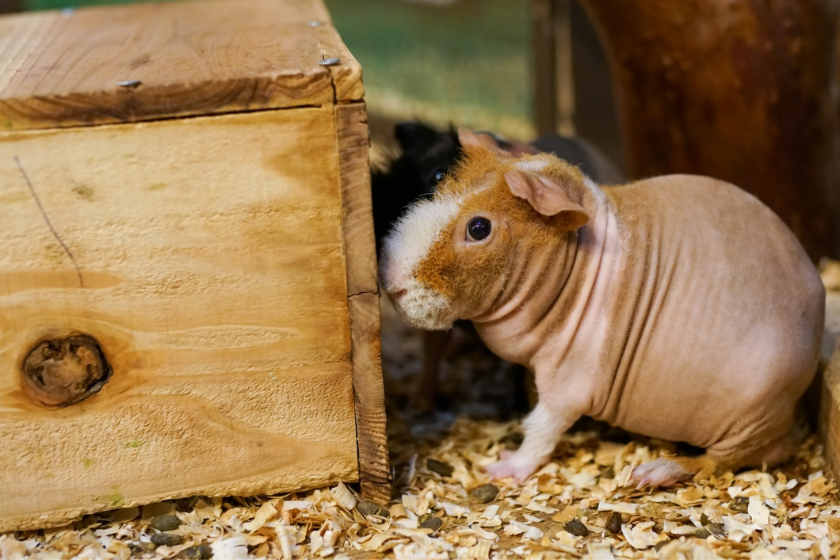
While they look very different, the differences between Skinny pigs and haired guinea pigs are minimal. They have friendly, outgoing personalities and, with proper handling, enjoy spending time with their humans. The biggest difference from other guinea pig breeds is that skinny pigs need to eat slightly more each day to maintain their body temperature. Owners can help with body heat by making sure their skinny pig always has access to proper bedding and blankets.
Skinny pigs have an unusual physical appearance. Their bodies are largely smooth, with some wrinkles around their legs and neck. A healthy one will have a plump body, and you shouldn't be able to see its spine or ribs.
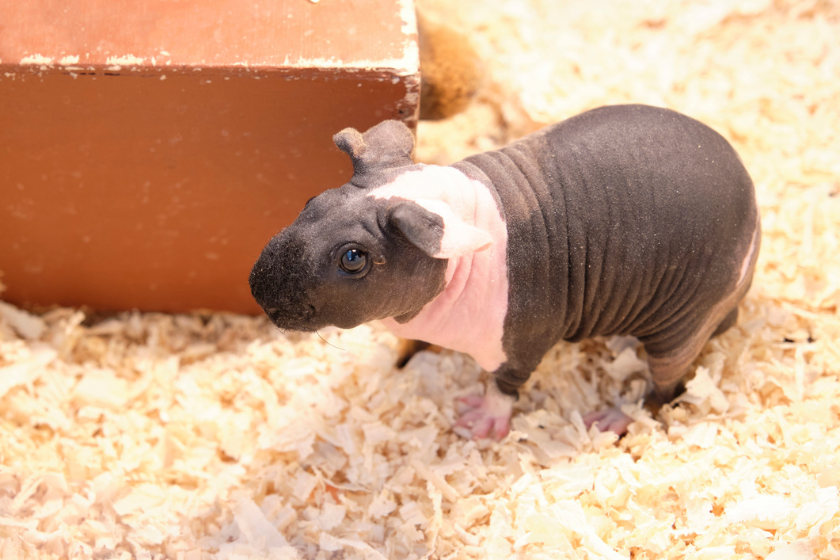
Skinny pig care is fairly simple but unlike normal guinea pig care, these pigs do have some particular health concerns. Because their skin is exposed, you'll need to apply sunblock to your pig if he'll be spending a long time in direct sunlight. Skinny pigs also often develop dry skin, but you can apply unscented baby lotion to the affected areas. These piggies may also contract mites, and if you spot mites on your pig, you should bring it to a vet right away. They have an expected lifespan of about seven to eight years.
This article was originally published August 31, 2019
